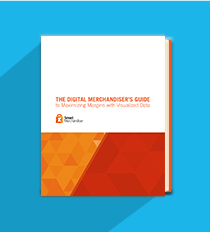
Multichannel retailing allows companies to expand their customer base through better communication. Multichannel eCommerce platforms can make the transition much easier.
The benefits of transitioning from single channel retailing to comprehensive, multichannel retailing are well known and well documented. These benefits include: Increased revenue and growth opportunities, better responsiveness to changing environments improved customer interactions, increased customer loyalty, and an overall better customer experience.
However, implementing a multichannel approach is a daunting task full of challenges, beginning with costs and continuing through the process of synchronizing all channels. Beyond the investment in a multichannel eCommerce platform that will simplify many steps, the process of transitioning to multichannel retailing begins with an easy, three-step plan.
-
Create a Multichannel Strategy: The first step should always be to lay out a strategic plan of how to proceed. This begins with deciding which channels will be the used: telephone, mail, interactive television, website, catalog, email, etc. The simple choice is to go with whatever is most modern. However, what matters most is actually which channels are most effective at connecting with the intended demographics. For example, a product or service geared towards a younger crowd would favor mobile-commerce and eCommerce, but a product targeting senior citizens would favor traditional marketing methods such as catalogs, mailers, and home-shopping television.
-
Determine the Relative Priority of the Channels: This begins with heavy research into customers and their habits. Some channels will be more effective than others; therefore they deserve more attention. For example, if 65% of all customer interactions and purchases come from the website, and the remaining 35% is evenly distributed among all other channels, the website clearly is the priority.
However, it is important to acknowledge that partial investment is not an option. Every channel deserves a full investment of resources. Ignoring a channel will cause it to fail, which will also hurt the brand. A telephone system needs to have a clear and concise tree to simplify the ordering process, and there needs a representative available to handle troubleshooting. A website cannot function with designers alone; there needs to be an IT representative to handle troubleshooting and, more importantly, security.
-
Adopt and Implement Best Practices for Integrating New with Old Technology: Integration is always the most difficult part of a multichannel transition. The customer experience must be consistent on all channels. For example, if a product is sold in-store, it should also be available for order online. The customer service online should be consistent with in-store and telephone customer service. This means that a company needs to take great efforts to keep all channels in unison. Failure to synchronize will lead to major problems down the road for sales, merchandising, inventory, and customer service.
Though the process is daunting, the benefits of multichannel expansion are far too substantial to overlook. With time, patience, and proper allocation of resources, it can provide a handsome return on investment.
Improving profit margins is at the top of all eCommerce merchandiser’s to-do lists which is why we’ve created The Digital Merchandiser’s Guide to Maximizing Margins with Visualized Data eBook.
Download the eBook to learn more!


